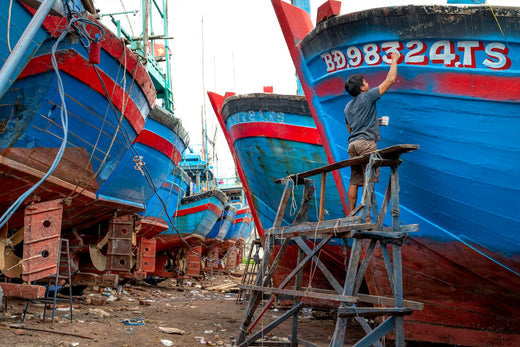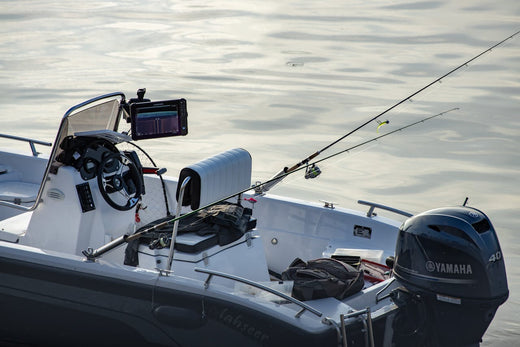Your Cart is Empty
ORDERS OVER $99 UNLOCK FREE* SHIPPING
Menu
-
- Home
- Archery
- Automotive/RV
- Boating
- Camping
- Fishing
- Hunting
- Outdoor
- Shooting
- Trailering
- Watersports
- Brands
-
- (208) 590-7477
- Login

ORDERS OVER $99 UNLOCK FREE* SHIPPING

How to Grease Trailer Bearings
5 min read
Table of Contents
- Introduction
- 1. Understanding Trailer Bearings
- 2. Signs of Worn-out Bearings
- 3. Tools and Materials Required
- 4. Preparing the Trailer
- 5. Removing the Wheel and Hub
- 6. Cleaning the Bearings
- 7. Inspecting and Replacing Bearings
- 8. Applying Grease to Bearings
- 9. Reassembling the Hub and Wheel
- 10. Torquing the Lug Nuts
- 11. Testing and Checking for Proper Greasing
- 12. Maintenance Schedule for Greasing Trailer Bearings
- 13. Additional Tips for Trailer Bearing Maintenance
- Conclusion
How to Grease Trailer Bearings: A Step-by-Step Guide
Introduction
Trailer bearings play a crucial role in ensuring smooth and safe operation of your trailer. Proper maintenance and regular greasing of the bearings are essential to prevent wear and tear, reduce friction, and extend the lifespan of your trailer. In this article, we will guide you through the process of greasing trailer bearings in a step-by-step manner, ensuring that your trailer remains in optimal condition for your journeys. So let's dive in and learn how to grease trailer bearings effectively.
1. Understanding Trailer Bearings

Trailer bearings are mechanical components that allow the wheels to rotate smoothly on the axle spindle. They consist of an outer and inner bearing, races, grease seal, and a cotter pin or tang washer. The bearings need to be properly lubricated to reduce friction and heat generated during rotation.
2. Signs of Worn-out Bearings
Before diving into the greasing process, it's important to identify the signs of worn-out bearings. These include:
- Excessive wheel play or wobbling
- Unusual grinding or humming noises while towing
- Uneven tire wear
- Overheating of the hub after driving
- Visible signs of rust or damage on the bearings
If you notice any of these signs, it's crucial to inspect and potentially replace the bearings before greasing them.
3. Tools and Materials Required
To grease your trailer bearings, you will need the following tools and materials:
- Jack and jack stands
- Lug wrench or socket set
- Grease gun
- High-temperature wheel bearing grease
- Clean rags or paper towels
- Gloves (We prefer Nitrile Gloves)
- Clean container for bearing cleaning
- Brake cleaner or parts cleaner
- New cotter pin or tang washer (if necessary)
4. Preparing the Trailer
Before starting the greasing process, it's important to prepare your trailer:
- Park the trailer on a flat and level surface.
- Engage the trailer's parking brake and chock the wheels.
- If your trailer has brakes, disconnect them to ensure safety during the process.
- Use a jack to elevate the trailer and securely place jack stands under the frame.
5. Removing the Wheel and Hub
Now that the trailer is prepared, follow these steps to remove the wheel and hub:
- Loosen the lug nuts using a lug wrench or socket set.
- Raise the trailer with the jack until the wheel is off the ground.
- Completely remove the lug nuts and take off the wheel.
- Locate the dust cap covering the hub and remove it carefully.
- Inspect the cotter pin or tang washer and remove it.
- Slide off the hub from the spindle and set it aside.
6. Cleaning the Bearings

Proper cleaning of the bearings is essential before greasing them. Follow these steps to clean the bearings:
- Carefully remove the outer bearing from the hub.
- Place the bearing in a clean container.
- Use a suitable brake cleaner or parts cleaner to clean the bearing thoroughly.
- Rotate the bearing while spraying the cleaner to remove any dirt, debris, or old grease.
- Use a clean rag or paper towel to wipe off the excess cleaner and dry the bearing.
- Repeat the same process for the inner bearing.
7. Inspecting and Replacing Bearings
After cleaning, inspect the bearings for any signs of wear or damage. If you notice any of the following, it's recommended to replace the bearings:
- Pitting or scoring on the bearing surfaces
- Cracked or damaged races
- Excessive play or looseness in the bearings
- Rough or gritty feeling when rotating the bearings
If replacement is necessary, consult your trailer manufacturer's specifications and replace the bearings accordingly.
8. Applying Grease to Bearings
Now it's time to grease the bearings. Follow these steps to ensure proper greasing:
- Take a high-temperature wheel bearing grease and load it into a grease gun.
- Apply a small amount of grease to the palm of your hand and evenly distribute it over the entire surface of the bearings.
- Press the grease into the bearings, ensuring that all the spaces between the rollers are filled.
- Rotate the bearings while applying pressure to ensure thorough coverage.
- Continue greasing until you see fresh grease coming out from the other side of the bearings.
- Repeat the same process for both the inner and outer bearings.
9. Reassembling the Hub and Wheel
With the bearings properly greased, it's time to reassemble the hub and wheel:
- Slide the inner bearing back into the hub, followed by the grease seal.
- Carefully place the hub back onto the spindle.
- Slide the outer bearing onto the spindle.
- Insert a new cotter pin or tang washer through the castle nut and spindle hole, securing the hub in place.
- Bend the ends of the cotter pin or washer to prevent it from coming loose.
- Place the dust cap back onto the hub, ensuring it fits snugly.
10. Torquing the Lug Nuts
Once the hub and wheel are reassembled, it's crucial to properly torque the lug nuts:
- Tighten the lug nuts by hand until they are snug.
- Use a torque wrench to tighten the lug nuts according to your trailer manufacturer's specifications.
- Follow a star or cross pattern to ensure even tightening.
- Check the torque of each lug nut to ensure they are all properly tightened.
11. Testing and Checking for Proper Greasing
After completing the greasing process, it's essential to test and check for proper greasing:
- Spin the wheel to check for smooth rotation.
- Listen for any unusual noises or grinding sounds.
- Check the hub for excessive heat after driving a short distance.
- If everything seems normal, you have successfully greased your trailer bearings.
12. Maintenance Schedule for Greasing Trailer Bearings
To maintain the optimal condition of your trailer bearings, follow a regular maintenance schedule:
- Check the bearings annually or every 12,000 miles, whichever comes first.
- Inspect for signs of wear, damage, or contamination.
- Clean and regrease the bearings as necessary.
13. Additional Tips for Trailer Bearing Maintenance
Here are some additional tips to keep your trailer bearings in excellent condition:
- Avoid submerging your trailer in water, as it can lead to water contamination in the bearings.
- Use high-quality, high temperature wheel bearing grease for better performance.
- Always use latex gloves when handling grease and bearings to prevent contamination.
- Store your trailer in a clean and dry environment to minimize the risk of rust and damage to the bearings.
- If you frequently tow your trailer in extreme conditions, such as off-road or high-temperature environments, consider more frequent inspections and greasing.
- Regularly inspect the grease seals and replace them if they show signs of wear or damage.
Conclusion
Properly greasing trailer bearings is a crucial part of trailer maintenance to ensure smooth and safe operation. By following the step-by-step guide outlined in this article, you can maintain the longevity and performance of your trailer bearings. Remember to perform regular inspections, clean the bearings thoroughly, and apply high-quality grease for optimal results. By taking care of your trailer bearings, you can enjoy worry-free towing experiences.



